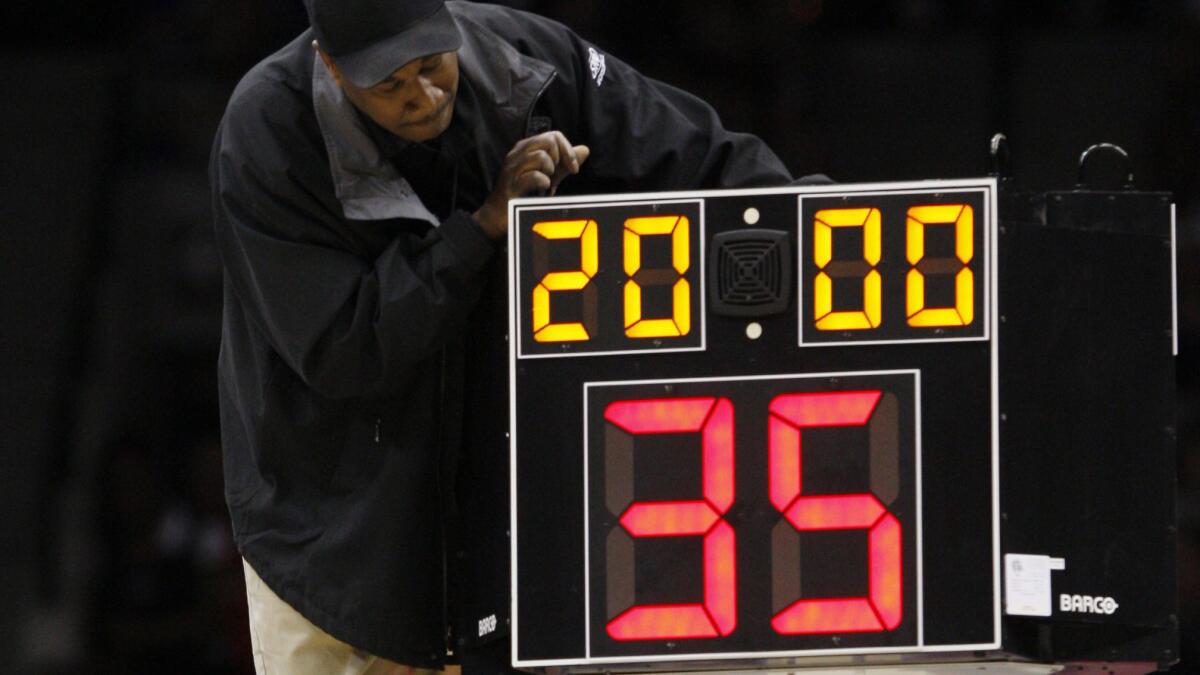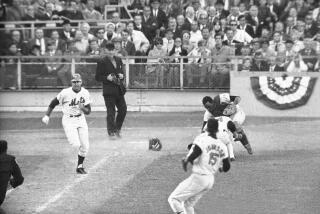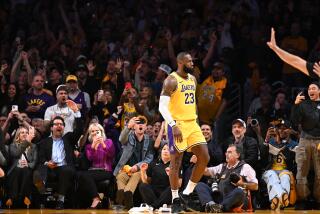NCAA rules committee recommends reducing shot clock to 30 seconds

A technician adjusts a shot clock during an
- Share via
In an anticipated decision, the NCAA men’s basketball rules committee recommended Friday that the shot clock be reduced from 35 seconds to 30 seconds.
A move to a shorter shot clock would probably help speed up the game and increase scoring, which has seen a significant drop in recent years. Scoring in men’s college basketball hit an all-time low in 2012-13 when teams averaged 67.5 points per game. Last season, teams fared only a fraction of a point better at 67.6 points per game.
“The committee has taken significant steps to reverse the trends in the sport that are concerning to the men’s college basketball world,” said Rick Byrd, chair of the committee and Belmont University men’s basketball coach, in a statement. “Our anticipation is that dedicated officiating enforcement, along with this package of changes, will help balance the offense and defense in our game.”
If the NCAA were to adopt a 30-second shot clock, it would be college basketball’s first change to the shot clock since 1993 when it was reduced from 45 to 35 seconds.
A 30-second shot clock was used as an experiment during the NIT, CBI and CIT postseason tournaments in March.
In addition to the 30-second clock, the committee pushed for other rule changes designed to increase the game’s pace. They recommended extending the restricted arc under the basket from three feet to four feet to reduce the number of collisions. They also favored taking away one second-half timeout from each team and blocking coaches from calling live-ball timeouts.
The proposed changes must be approved by the NCAA’s playing rules oversight panel during its June 8 meeting in order to be implemented.
The Associated Press contributed to this report.
More to Read
Go beyond the scoreboard
Get the latest on L.A.'s teams in the daily Sports Report newsletter.
You may occasionally receive promotional content from the Los Angeles Times.











